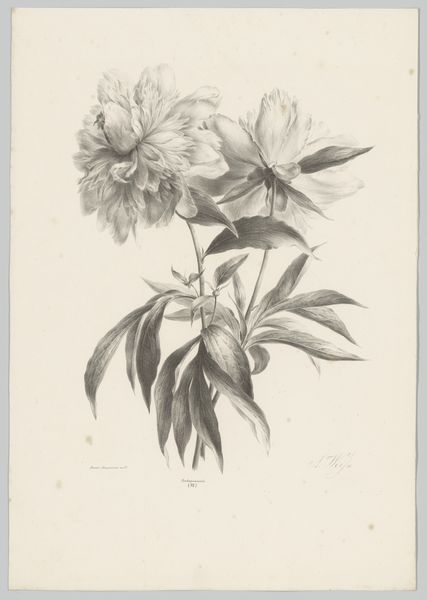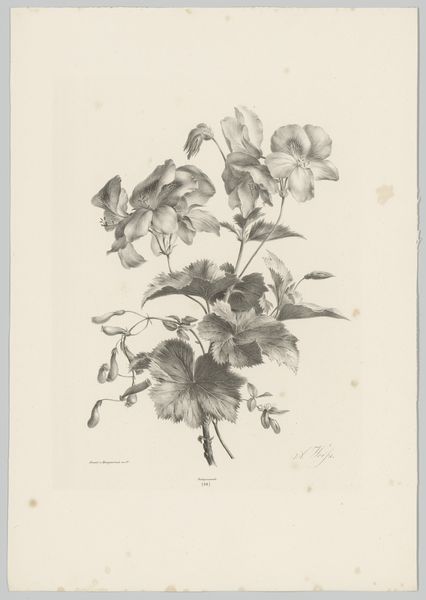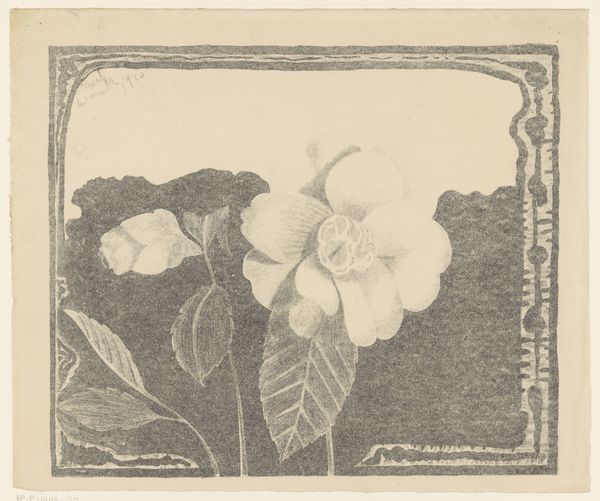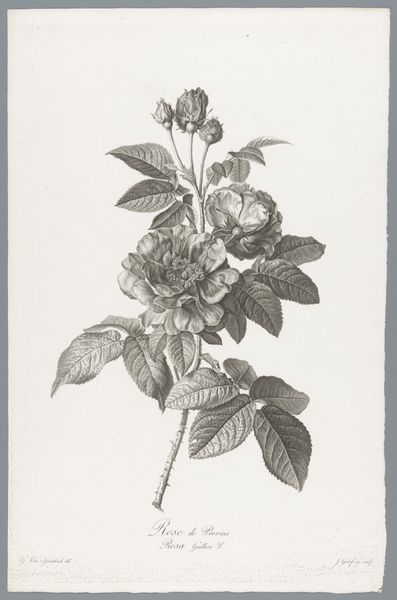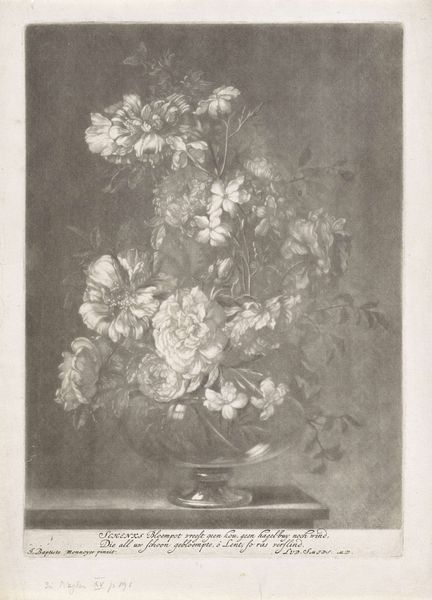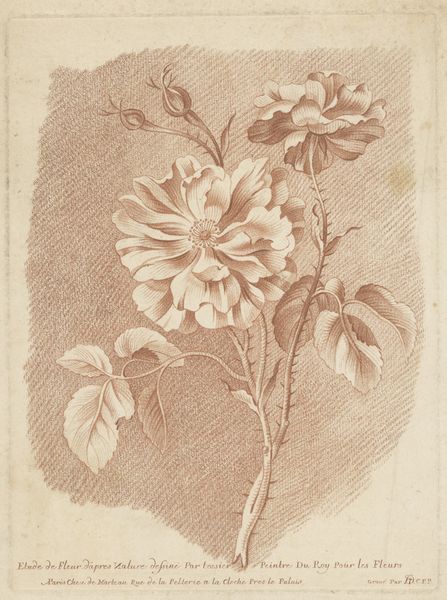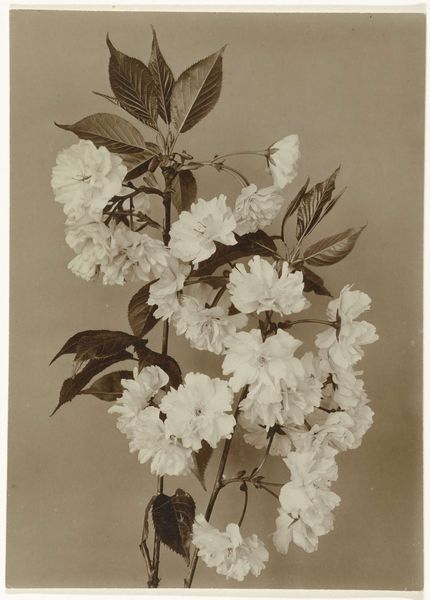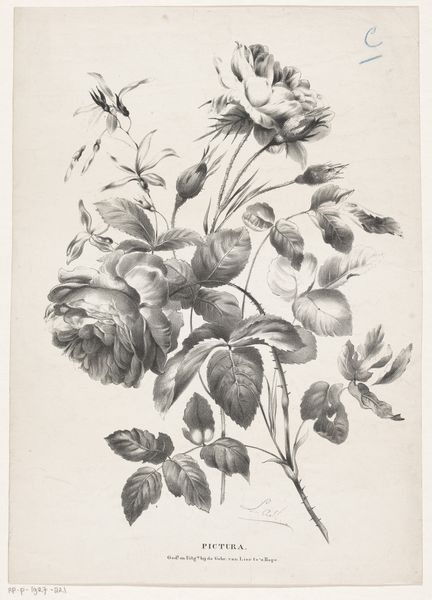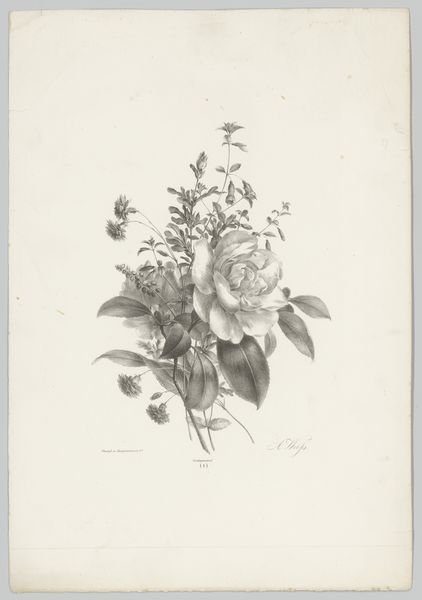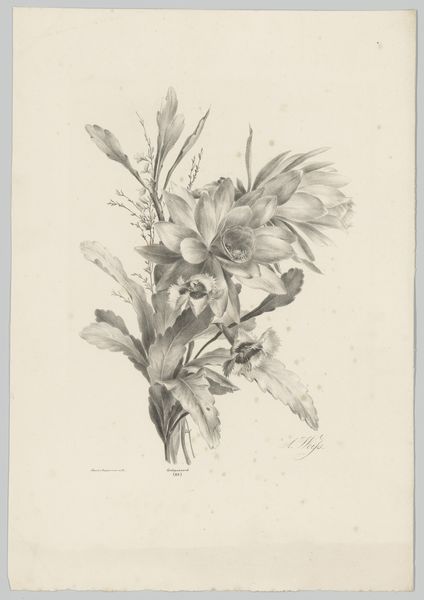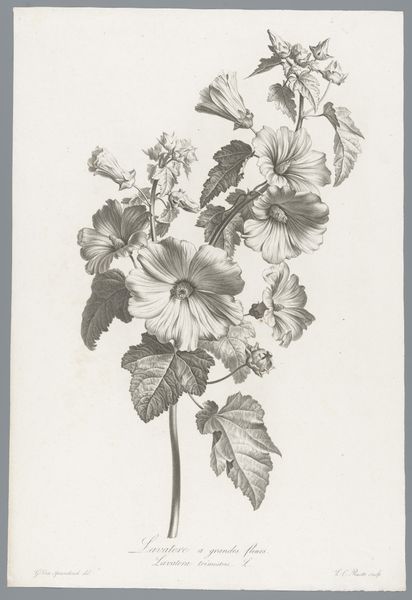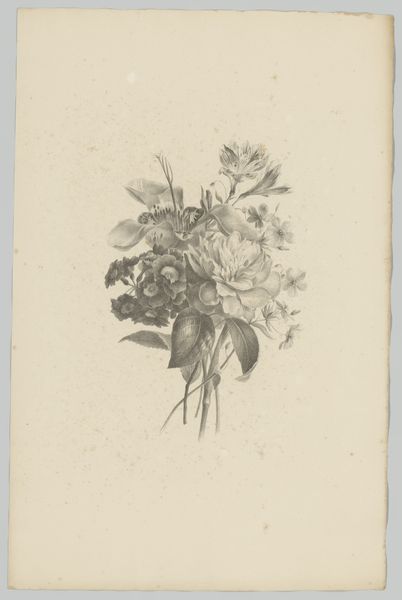
drawing, print, etching
#
drawing
# print
#
etching
#
botanical illustration
#
flower
#
botanical drawing
#
line
#
botanical art
Dimensions: height 312 mm, width 307 mm
Copyright: Rijks Museum: Open Domain
Editor: Here we have "Rododendron," an etching and print by C.J. Rovers, created in 1920. The detail is quite stunning, especially in the flower petals. How would you interpret this piece, considering the print medium and its composition? Curator: Observe the artist’s commitment to line and texture. The formal elements establish the artwork's structure. Note the density of lines in the blossoms, which creates a sense of volume and light. Rovers’ skillful use of hatching and cross-hatching conveys not just form but also a tactile quality. How does the tonal range influence your understanding? Editor: It definitely directs my eye. The darker leaves create contrast that emphasizes the brighter rhododendron blooms. Does this contrast have any meaning in the visual structure? Curator: Precisely. The interplay of light and dark, the positive and negative spaces, all contribute to the structural integrity. We can analyze how Rovers uses repetition and variation to guide the viewer’s gaze. See how the repetition of petal shapes is subtly disrupted by the differing angles? It introduces dynamism. Editor: I see that now! So, focusing on form allows us to really deconstruct the elements the artist used to build a viewing experience. Curator: Exactly. It's about deciphering how Rovers uses fundamental artistic elements to create a cohesive and engaging whole. It is not just a representation of a flower; it's a meticulously constructed arrangement of line, tone, and form. Editor: That makes me see the print in a completely different, more analytical light. I had initially only viewed it as a pretty botanical illustration. Curator: By considering these formal components, we appreciate the choices made and how those choices dictate our perception.
Comments
No comments
Be the first to comment and join the conversation on the ultimate creative platform.
